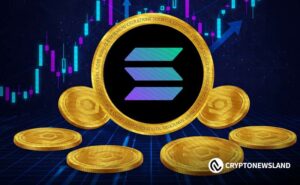x402 goes viral, AI Agent trading volume surges 100x—How does AEON become the crypto settlement engine in the era of AI autonomous payments?
x402 ignites the AI payment revolution as AEON takes the lead in bringing it to global commerce.
Author: momo, ChainCatcher
Recently, the x402 protocol launched by Coinbase has exploded overnight. Not only have related concept tokens surged, but it has also been adopted or endorsed by Web2 giants such as Google, AWS, and Visa, driving the AI agent transaction volume on its protocol to soar by over 10,000% in the past month.
As early as May this year, AEON had already launched the AI Payment protocol ; in August, AEON officially partnered with the Coinbase x402 protocol, becoming one of its first ecosystem partners and taking the lead in launching an AI Payment product integrated with x402. In October, AEON announced the official launch of x402 Facilitator on BNB Chain, working closely with the BNB Chain team to advance the native x402 protocol on BNB Chain.
In this wave of autonomous AI ignited by x402, AEON is not a follower, but a key infrastructure builder that has already laid out its plans, supported by real products and an authentic merchant network. How exactly is it positioned? And can it become the underlying settlement engine driving the entire AI economy?
The Boom Behind x402: The Payment Revolution in the AI Agent Era
The explosion of the x402 protocol has brought a key industry pain point to the forefront: When AI Agents can autonomously handle complex tasks, how do they "pay" for the consumption they generate in both the digital and real worlds?
Traditional financial infrastructure is almost powerless in this regard. There are two core pain points: First, the barrier of identity verification. The existing KYC system is designed to verify natural persons; AI agents cannot provide passports or ID cards, and thus cannot open bank accounts, lacking legal identity in the traditional financial system. Second, the mismatch in transaction models. AI economic activities are ultra-high-frequency and micro in scale, such as millisecond-level API calls, data purchases, or computing power rentals. The tens of thousands of transactions per second processing capacity of traditional networks like Visa, their high fees, and multi-day settlement cycles are completely ineffective in this scenario.
The emergence of the x402 protocol is precisely to fundamentally solve the standardization challenge of AI payments at the blockchain layer. It defines a universal protocol for value exchange by AI agents in crypto networks, enabling AI systems of different architectures to interoperate payments under a unified standard. This is equivalent to establishing an underlying "payment language" for the AI economy, solving the fundamental problem of "how to complete payments through dialogue" between AIs and between AI and services in a decentralized environment.
On top of the protocol layer built by x402, AEON aims to solve the more challenging issue of implementation—how to make this standardized payment capability penetrate the on-chain world and seamlessly connect with the global commercial network.
AEON states that it is the world’s first Crypto Settlement Layer designed for AI Agents. Its AI Payment product supports AI to autonomously complete payments and settlements, helping AI agents purchase products and services or complete transactions globally, realizing true Agentic Commerce (autonomous agent commerce).
How Does AEON Solve the Triple Challenge of AI Payments?
The AEON AI Payment solution is not a simple bridge, but a brand-new payment paradigm tailored for the AI economy.
First, AEON has created a verifiable "economic ID" for AI agents through an on-chain identity protocol. This system achieves a fundamental shift from "Know Your Customer" (KYC) to "Know Your Agent" (KYA), allowing AI to bypass traditional KYC, obtain independent payment identity and capability, and establish fully traceable on-chain payment records.
After solving the identity issue, AEON has built a crypto settlement layer capable of supporting the high-frequency micropayment needs of AI. Its network supports processing capabilities of up to 500,000 TPS, making massive, micro, and instant value settlements between AI agents or with external services possible. This allows AI to pay as smoothly and at extremely low cost as sending a message when calling services, hiring peers, or purchasing resources. AEON currently supports AI agents independently purchasing data, calling APIs, or hiring other AI agents to perform tasks, thus forming a complete economic closed loop.
Finally, AEON has bridged the "last mile" connecting global real-world commerce. By directly connecting with local payment standards such as QR Ph in the Philippines and Pix in Brazil, AEON’s network now covers over 50 million merchants. This means an AI agent can use crypto payments to directly book a hotel for a user in Manila, with the merchant receiving familiar local fiat currency, and the entire process completed within seconds. This move seamlessly extends AI’s payment capabilities from the purely on-chain space to the vast real-world economy.
The feasibility of this solution has already been validated in real scenarios. At a hackathon hosted by Coinbase Developers, AEON demonstrated in a public demo how an AI assistant integrated with the x402 protocol could autonomously complete the entire process from hotel search, price comparison to booking and payment via the AEON network. AEON’s 50 million merchant network can bring AI agent payments into more real consumer scenarios.
From Payment Protocol to AI Economic Infrastructure Evolution
AEON’s ecosystem expansion path reflects its judgment on the development trend of the AI economy. In addition to establishing cooperation in the BNB Chain AI ecosystem, its technical roadmap shows plans to continue integrating with mainstream AI agent infrastructures such as A2A Protocol and MCP, and to expand to e-commerce platforms like Amazon and Shopify, aiming to cover over 200 million merchants worldwide.
This development path reflects AEON’s thinking on its own positioning: starting from solving instant payment needs, gradually building infrastructure to support the autonomous AI economy. When AI agents can autonomously complete data service procurement, computing resource rental, API call payments, and even collaborative task execution, the payment link will become the core component driving the operation of the entire AI economic system, and AEON is committed to becoming the underlying "financial hub" of the AI economy.
By systematically solving the three interrelated challenges of identity verification, payment performance, and real-world connectivity, AEON provides the necessary payment infrastructure for the autonomous AI economy. In the AI transaction ecosystem driven by the x402 protocol, AEON’s value lies in transforming the interoperability standards of the protocol layer into practical global commercial solutions.
As the depth and breadth of AI agent participation in economic activities continue to increase, reliable and efficient payment and settlement services will become the key elements supporting this emerging economic system. AEON’s early practices in this field have enabled it to accumulate experience in technical validation and ecosystem cooperation, thus establishing a first-mover advantage in the future competition of the AI economy.
Disclaimer: The content of this article solely reflects the author's opinion and does not represent the platform in any capacity. This article is not intended to serve as a reference for making investment decisions.
You may also like
Bloomberg: $263 million in political donations ready as the crypto industry ramps up for the US midterm elections
This amount is nearly twice the maximum SPAC Fairshake invested in 2024, and slightly exceeds the total spending of the entire oil and gas industry in the previous election cycle.

PEPE Price Chart Signals Oversold Zone Reversal as RSI Turns Upward

Ethena (ENA) Nears Crucial $0.54 Zone After Strong 10.5% Weekly Rebound

Solana Maintains 3-Year Support, Eyes $280 Resistance for Next Key Breakout

